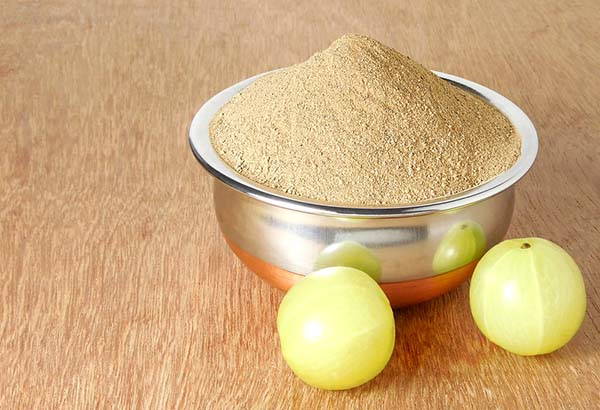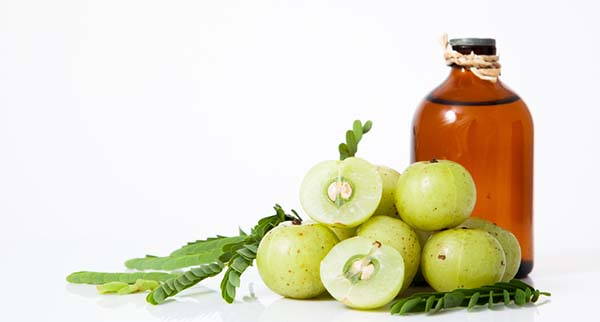Amla, or Indian gooseberry, is a small fruit not well known in the West but really full of potential for health. Let's discover all the properties and how to use amla not only for our well-being but also for the beauty of skin and hair.
Don't store avocado like this: it's dangerousTHEamlathe Indian gooseberry, is a small fruit not well known in the West but really rich in potential for health. Let's discover all the properties and how to use amla not only for our well-being but also for the beauty of skin and hair.
Particularly dear to Ayurveda, amla is one of the most important plants in traditional Indian medicine. The fruit that comes from Phyllathus emblica, native to the tropical and subtropical areas of Southeast Asia, looks a bit like a greenish-yellow plum and boasts an incredible list of health benefits most of which have also been confirmed by modern scientific research.
Are you curious to find out more about this fruit?
Index
Amla, property
Among the best known benefits of the alma we find the ability:
- Antioxidant: rich in substances that counteract the action of free radicals, the alma is able to act with anti-aging power on various organs and functions of the body. In general, therefore, it slows down the aging process and helps longevity (which is why it is called the fruit of long life).
- It supports the immune system and protects against disease: this fruit helps the well-being of the immune system and helps it to work properly to better defend the body. Studies have shown that the beneficial effects of amla powder also include protection against heart disease (it also reduces cholesterol) and cancer.
- Lower inflammation: even in the case of arthritis and osteoporosis, amla has shown a beneficial anti-inflammatory effect.
- Blood sugar control: Indian gooseberries contain active ingredients that can help control blood sugar levels.
- Antibacterial properties: the powder obtained from these fruits has shown its effectiveness against bacteria such as Staphylococcus aureus, Vibrio cholerae and Pseudomonas aeruginosa. It has also been shown to be effective against ulcers due to the presence of Helicobacter pylori.
- Rich in vitamins and minerals: amla is one of the richest natural sources of vitamin C, a substance of great importance for our body but also contains many other B vitamins and mineral salts including calcium and iron. It can therefore be considered to all intents and purposes a natural supplement.
- Improve liver function: some studies show that amla reduces the oxidative stress of the liver by increasing the antioxidant substances and consequently improving its functionality.
- Ally of beauty: amla improves skin tone, protects eyes, counteracts hair loss and white hair growth. It also promotes weight loss.
According to Ayurvedic medicine this remedy can be useful in case of:
- breathing problems of various kinds
- digestive, gastrointestinal or liver disorders
- diabetes
- allergies
- skin problems
- Osteoporosis

Amla how to use it
Since it is very difficult to find fresh fruit in our latitude (among other things it is very sour and astringent therefore not really suitable for all tastes) it is more frequent and convenient to use alma in the form of powder or tablets, like another supplement. It is always better than a doctor expert in Ayurveda who knows all the characteristics of this plant and knows how to use it to the fullest, based above all on the problem you want to treat.
As for the use of amla on skin and hair, in this case oil is usually used even if there are beauty recipes in which amla powder is mixed.
How to use amla for skin and hair
A few drops of Amla oil they can be used on the skin of the face and body to treat impurities or for a moisturizing and rejuvenating effect. This natural product is also excellent as an anti-wrinkle.
If, on the other hand, you mix the powder with a little water in order to obtain a porridge and then add a teaspoon of honey (if you want to increase the softening effect) it can then be spread on the skin of the face or body as a natural mask. and skin moisturizer. Once dried after a few minutes it washes off with warm water.

If, on the other hand, you want to treat your hair with alma oil to strengthen it, prevent it from falling out or make it more full-bodied and bright or to tackle the problem of split ends we can use a little oil to make a pack 1 or 2 times a week.
The oil should be placed and massaged on the hair and scalp and kept in place for at least 1 hour (there are those who keep it in a pack even for the whole night covered with a cap). In this way the oil will stimulate circulation and nourish the hair. After the time has elapsed, wash it off with water and a neutral shampoo and with good Inci.
If you suffer from oily skin or dandruff, you can mix a little amla powder with water and then place it on the scalp and keep it in place for a minimum of 30 minutes.
On Amla read also:
- AMLA: PROPERTIES, APPLICATIONS AND COSMETIC USES
Finally, there are those who mix Amla powder with Henna to increase the coloring effect and obtain more intense shades but also for a further beneficial effect on the hair compared to that of henna alone.
Have you ever experienced the benefits of Amla?


























